“Project Crypto”
SEC Chairman Paul Atkins unveiled "Project Crypto" yesterday, "a Commission-wide initiative to modernise the securities rules and regulations to enable America’s financial markets to move on-chain”. The initiative aims to develop clear distinctions between securities and commodities, direct SEC staff to “work with firms seeking to distribute tokenised securities within the United States", innovate with "super-apps" and move towards efficient licensing. Crypto markets have pulled back sharply over the past 24 hours, with BTC trading below $115K and Ether down more than 6% amidst President Trump announcing a slew of new adjusted tariff rates, including a minimum of 15% on nations running a trade surplus with the US.

Daily Updates:
“To achieve President Trump’s vision of making America the crypto capital of the world, the SEC must holistically consider the potential benefits and risks of moving our markets from an off-chain environment to an on-chain one” – part of SEC Chair Paul Atkins speech at an “American Leadership in the Digital Finance Revolution” conference
- Yesterday the Securities and Exchange Commission (SEC) Chair, Paul Atkins, announced “Project Crypto” – “a Commission-wide initiative to modernise the securities rules and regulations to enable America’s financial markets to move on-chain”.
- According to Atkins, the project was in direct response to an earlier report published this week by President Trump’s Working Group on Digital Assets. That report contained recommendations for the SEC and other federal agencies to build a framework to boost U.S. dominance in digital asset markets, and Atkins plans to have SEC Commissioner Hester Pierce begin implementing some of those proposals.
- Below are some of the key implementations of “Project Crypto”:
- “Bring crypto asset distributions back to America” – establish a regulatory framework for distributions of crypto assets by removing “convoluted offshore corporate structures” and incentivise “crypto-based capital raising”.
- “Despite what the SEC has said in the past, most crypto assets are not securities” – directing Commission staff “to develop clear guidelines that market participants can use to determine whether a crypto asset is a security or subject to an investment contract”. This will help classify crypto assets “into categories, such as digital collectibles, digital commodities, or stablecoins, and assess the economic realities of a transaction”.
- Bring tokenisation to the US – according to Atkins “many firms seek to ‘tokenise’ their common stock, bonds and other securities” but this is being done offshore due to regulatory challenges in the US. “Project Crypto” directs SEC staff to “work with firms seeking to distribute tokenised securities within the United States and to provide relief where appropriate to assure that Americans are not left behind”.
- Custody and trading flexibility – “it is incumbent on the SEC to ensure that market participants have maximum choice when deciding where to custody and trade crypto assets”. Atkins believes “deeply” in Americans having their own self-custodial digital wallet, but those that “rely on SEC registrants, such as broker-dealers” will be “subject to additional regulatory requirements”.
- Innovating with “super-apps” and efficient licensing – another major goal of “Project Crypto” is to minimise the burden of being subject to multiple regulators or regulatory regimes. This was recommended by the White House report that stated market participants “should be permitted to engage in multiple business lines under the most efficient licensing structure possible”. One practical example of this is that “securities intermediaries should be able to offer a broad range of products and services under one roof with a single license”. Therefore, an SEC-regulated broker-dealer platform for example should be able to offer trading in non-security crypto assets alongside crypto asset securities, and other services, such as staking “side-by-side”, without requiring “fifty-plus state licenses or multiple federal licenses”. According to Atkins, “This model has worked well for banks, which are broadly exempted from many duplicative regulatory frameworks”.
- Fostering innovation – the Commission is “contemplating an innovation exemption that would allow registrants and non-registrants to quickly go to market with new business models and services that do not neatly fit within our existing rules and regulations”.
- The crypto market pulled back sharply over the course of yesterday, with spot prices across the board trading lower. BTC has fallen below $115K for the first time since early July and is down 3.4% over the past 24 hours. ETH has been hit harder, trading 6.4% lower over the same period, while SOL is down 7.4%, trading below $170.
- Volatility smile skews for ETH options have turned sharply bearish, with 7-day options assigning a volatility premium to OTM put options by as much as 6%. That’s the most negative put-call skew since July 4, 2025. In comparison, BTC volatility smiles have reacted less aggressively, with 7-day options put-call skew at a lower -3%.
- That comes amidst President Trump’s announcement of a slew of new adjusted tariff rates. Trump announced that the global baseline tariff rate will remain unchanged at 10%, while countries with trade surpluses with the US will face a minimum of 15%. Most of the tariffs will take effect after August 7.
- In a separate order, the President raised tariffs on Canadian goods not covered by the USMCA agreement from 25% to 35%, while hitting Switzerland with levies of 39%. In contrast, Mexico has received a 90-day extension of their current tariff rates to continue negotiations.
- Still, these tariff rates are likely to be subject to changes – Taiwan has already said the 20% tariff imposed on their goods by Trump is not final and may fall.
- Hong Kong has launched a licensing regime for fiat-referenced stablecoins, as of August 1 with a 6 month transition period, overseen by the Hong Kong Monetary Authority (HKMA).
- Firms must now obtain a license to issue or promote stablecoins to retail investors, with regulations addressing client fund segregation, anti-money laundering, and operator suitability. The framework addresses multi-currency stablecoins and mandates 100% reserve backing to ensure redemption stability.
- Ethereum researcher Justin Drake has proposed “lean Ethereum”, an upgrade designed to increase the chain's security, branded “fort mode” resilience while boosting scalability and decentralization with “beast mode” performance.
- It proposes upgrades across all three core L1 sublayers: Lean Consensus (a hardened Beacon Chain 2.0 with fast finality and hash-based aggregate signatures), Lean Data (Blobs 2.0 with post-quantum commitments and granular sizing), and Lean Execution (a SNARK-friendly EVM 2.0 with a minimal instruction set, possibly RISC-V).
- Coinbase have announced intentions to expand their offering beyond crypto, offering tokenised real-world assets, equities, derivatives, early-stage token launches and introduce prediction markets.
- These new services will be initially targeted at US users and will later expand internationally as regulatory approvals are secured.
This Week’s Calendar:

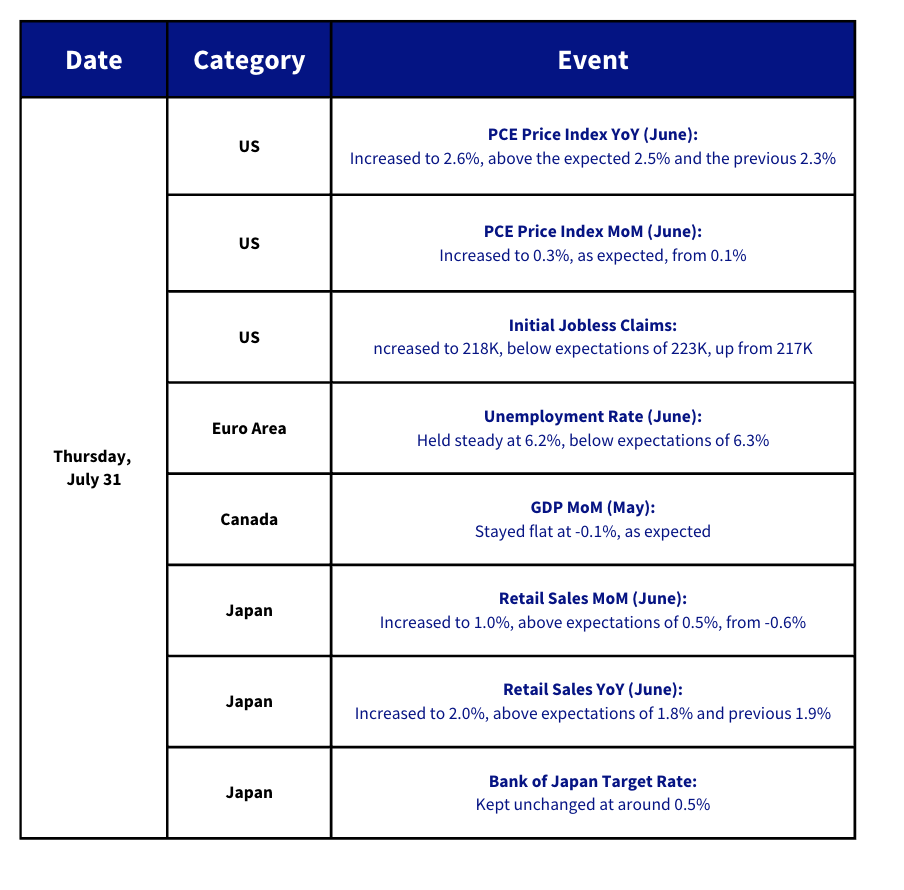

Charts of the Day:
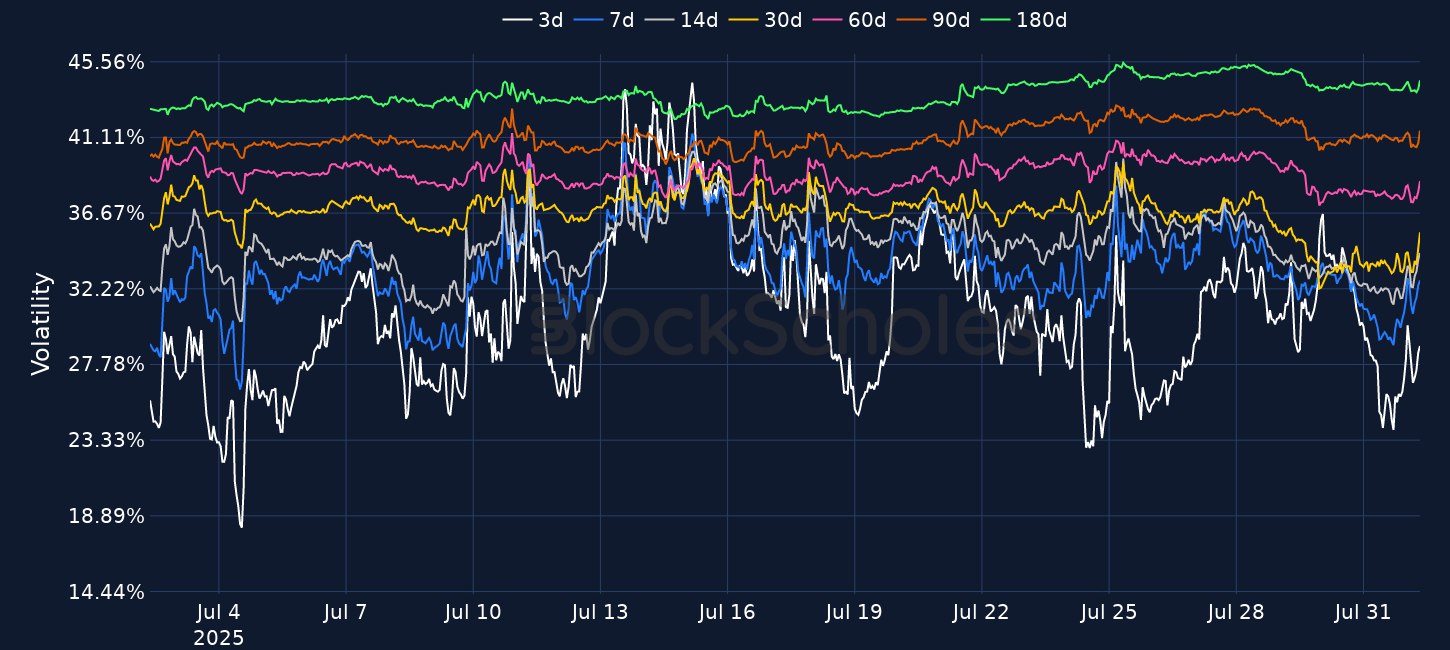
Figure 1. BTC at-the-money implied volatility across selected tenors. Source: Deribit, Block Scholes
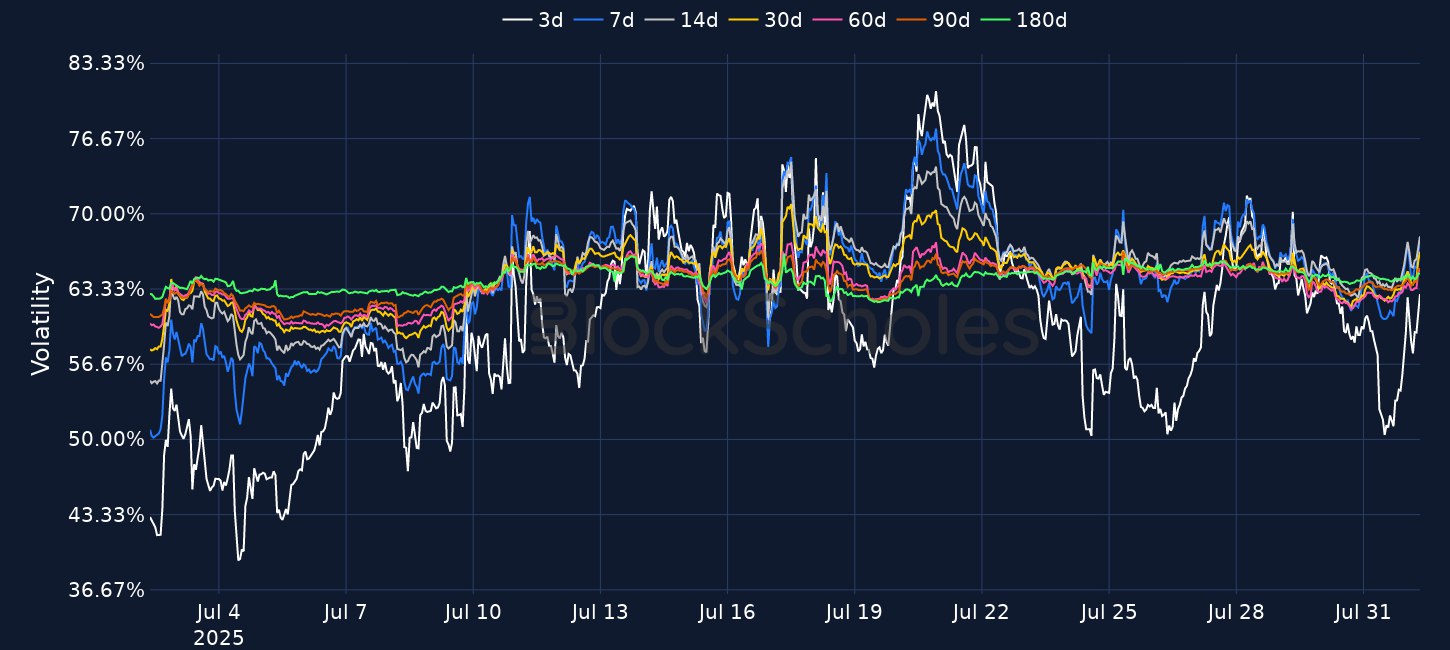
Figure 2. ETH at-the-money implied volatility across selected tenors. Source: Deribit, Block Scholes
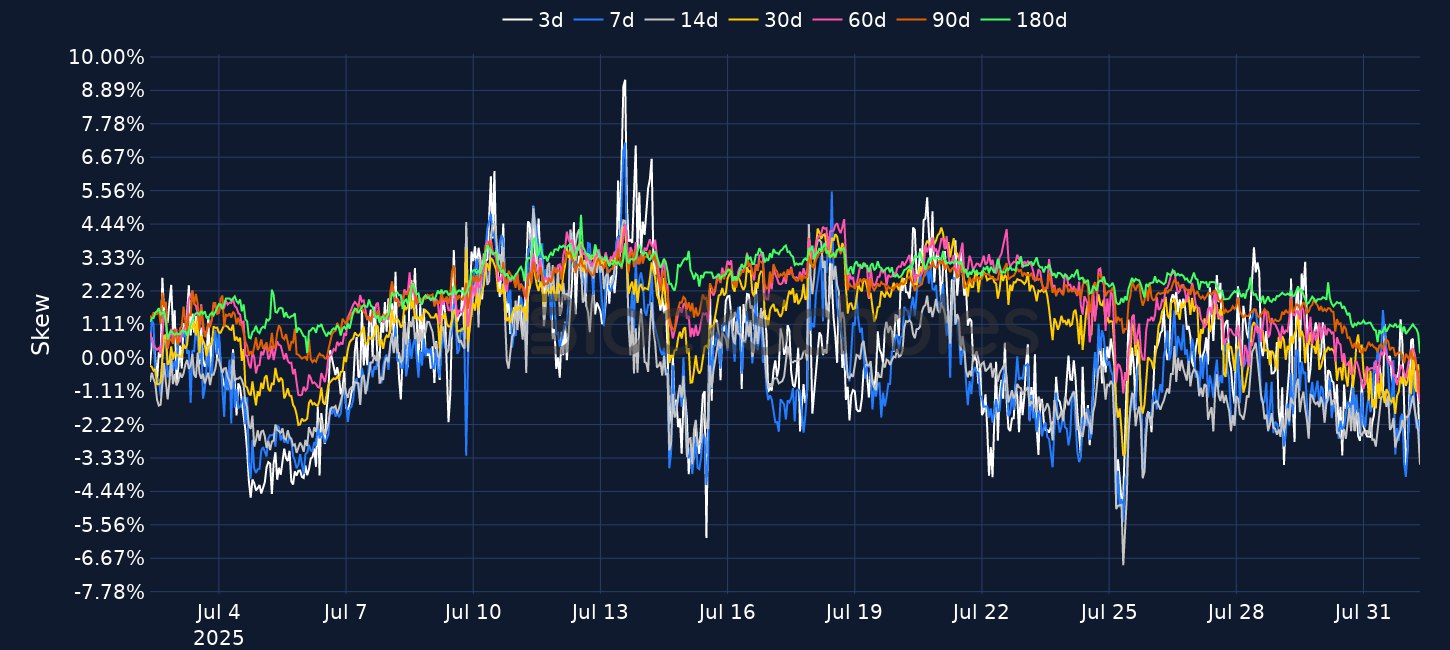
Figure 3. BTC 25-delta put-call skew ratio across selected tenors. Source: Deribit, Block Scholes
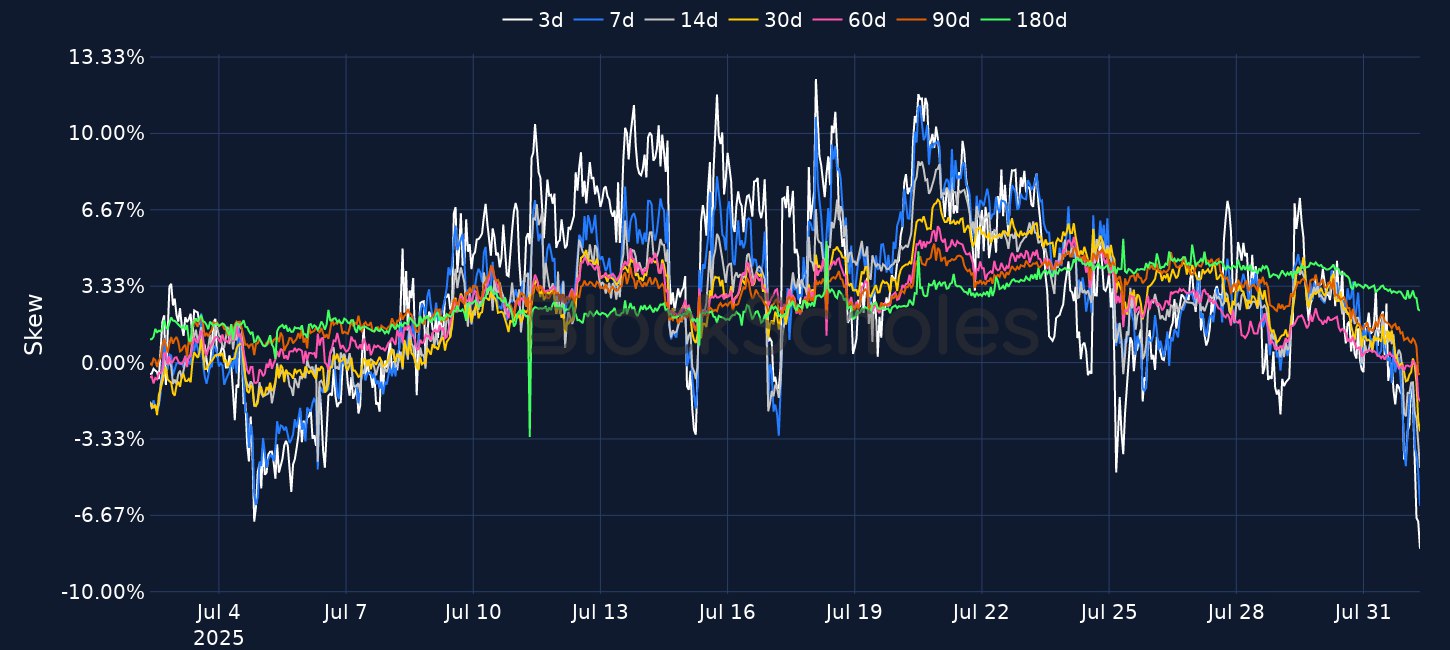
Figure 4. ETH 25-delta put-call skew ratio across selected tenors. Source: Deribit, Block Scholes


